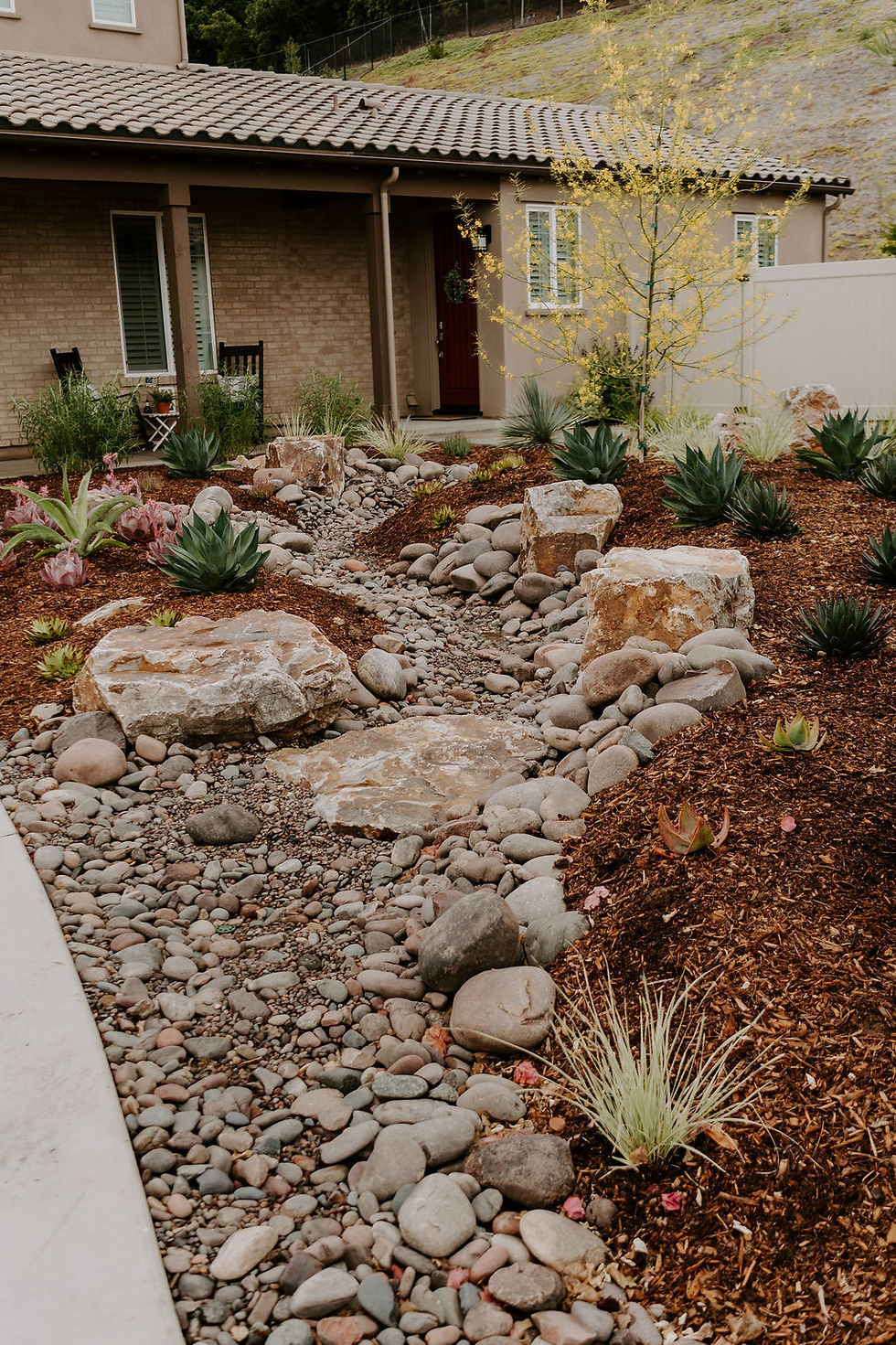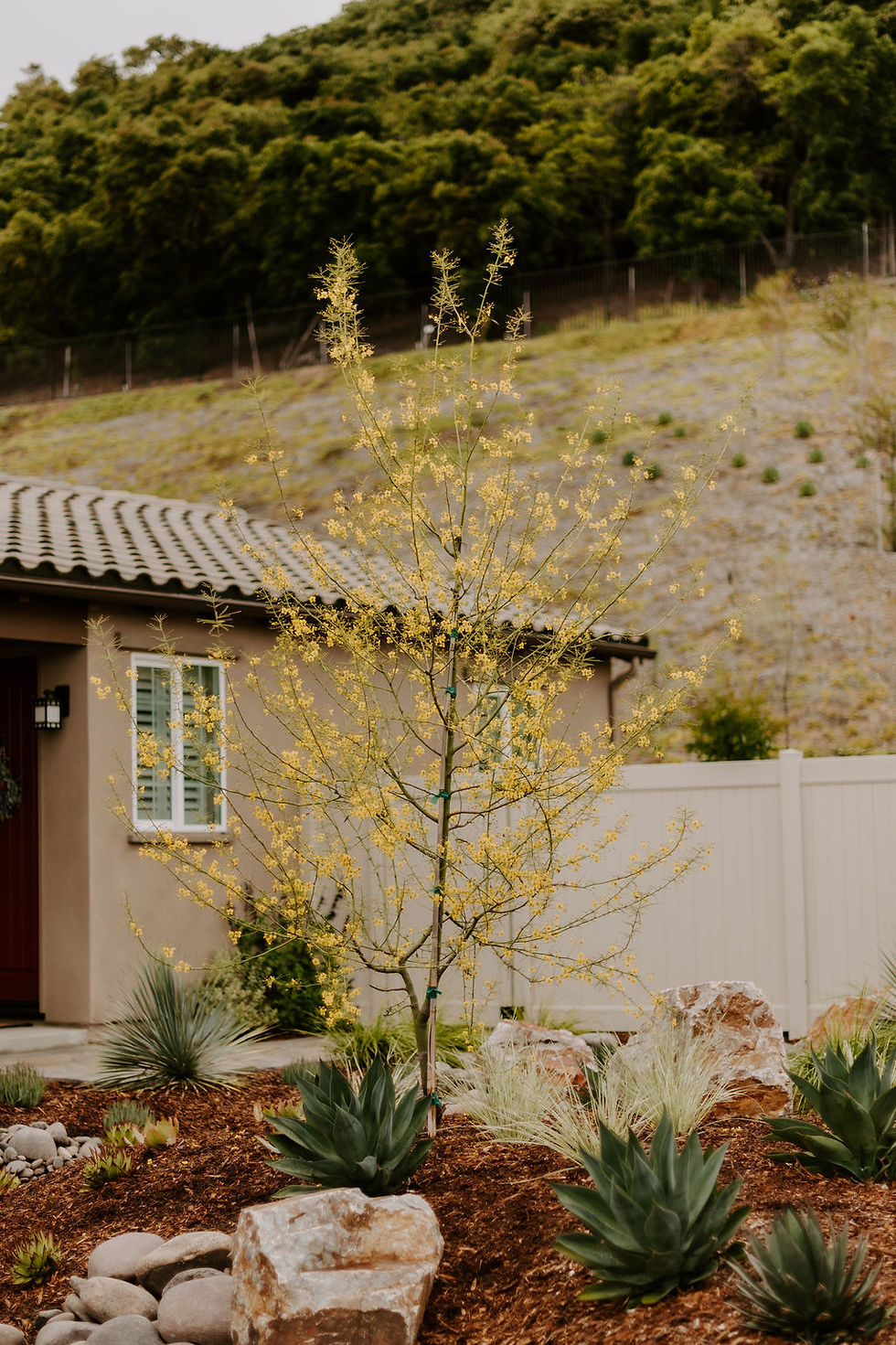Every Yard Needs a Statement Plant: Here’s How to Pick Yours
- Erin Fredrickson

- Sep 17
- 3 min read
Ever look at your yard and think… “why does this still feel messy?” You’re not alone. I hear it all the time. The problem isn’t always the number of plants, it’s that there’s no statement plant giving the yard direction.

A statement plant is the anchor. The bold tree, palm, or sculptural succulent that sets the tone and makes the whole yard feel intentional. Miss it, and the yard feels unfinished. Nail it, and the space looks complete.
Here’s how we’ve used statement plants across different yard styles, and why each one works.
Why Statement Plants Matter
They pull your eye. Every great design has a focal point. In a yard, that’s usually a plant with presence.
They solve problems. Blank walls, awkward corners, boring entryways — one strong plant can fix all three.
They define style. Mediterranean, desert, coastal, luxe… you know it the second you see the right plant.
They make the yard feel done. Skip one and your space looks like it’s missing a heartbeat.
The Right Statement Plant for Each Yard Style
Low Maintenance (Dry Stream Bed)

We designed a dry stream bed yard that could have felt like just rocks and gravel. The fix? A Palo Verde tree. Its branching silhouette brings shade, seasonal color, and instant presence without blowing the water budget.

Pro tip: We use Palo Verde trees in the right climates, hot, dry areas where their sculptural form and low-water needs make the most impact.
Modern Mediterranean
Mediterranean yards need structure and timeless appeal. Nothing does that better than an Olive tree. Its gray-green foliage and gnarled trunk scream old-world character. Pair it with gravel and citrus and the vibe is locked in.


Want functional style? Add a Citrus tree. Lemon, lime, or orange...you get fruit, flowers, and that unmistakable Mediterranean feel.
Pro tip: Layer rosemary or lavender at the base to tie everything together with color and fragrance.
Minimalist Luxe
This style is all about clean lines and bold, sculptural details. Plants aren’t just filler. They’re art pieces.

At one project, we lined an expansive blank wall with Aloe Hercules. Their vertical form and structural presence turned an empty space into a jaw-dropping entry.

We also use Dracaena marginata as the perfect fix for awkward shaded corners. It adds height and interest without overwhelming the space.

Pro tip: Stick to repetition and odd numbers. Three strong aloes in a row look intentional. Five scattered around the yard look like a mistake.
Coastal Garden
Coastal yards need movement and texture, plants that look good with salty air and shifting light.

The Dragon Tree (Dracaena draco) is our go-to here. Its sculptural form stands strong against coastal conditions and instantly becomes the focal point without taking over the whole yard.
Pro tip: Pair it with succulents and ornamental grasses so the bold structure of the dragon tree plays off the softer textures around it.
How to Pick the Right One
Match the style. Don’t grab a plant just because it looks cool at the nursery. If it doesn’t fit your yard style, it won’t work.
Check the conditions. Sun, shade, water use, and mature size matter more than the nursery tag.
Limit yourself. One or two statement plants is plenty. More than that and they compete instead of complement.
Think long-term. That “cute” plant in a 5-gallon pot could be a 20-foot monster in five years.

Every yard style needs one strong anchor plant. It’s the difference between a yard that feels like a collection of plants and one that feels complete.
Not sure which one fits your yard style? That’s where we come in! We’ll help you pick the right statement plant, place it in the right spot, and build the rest of your yard around it so it finally feels done. Check out our services and fill out a contact form when you're ready to upgrade your yard.



